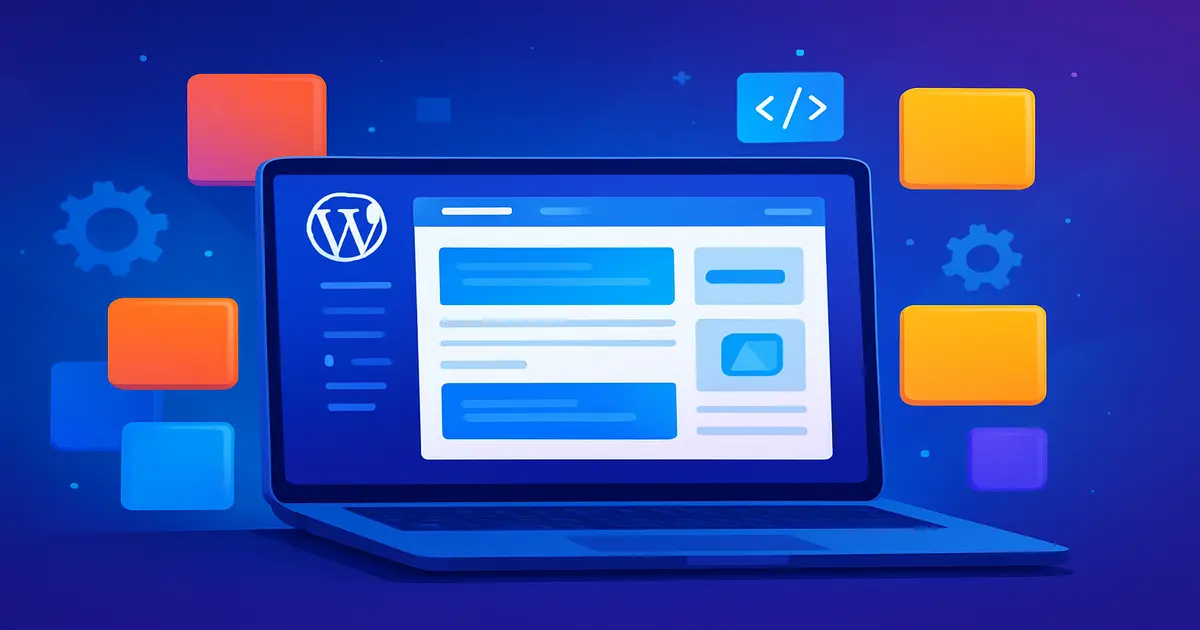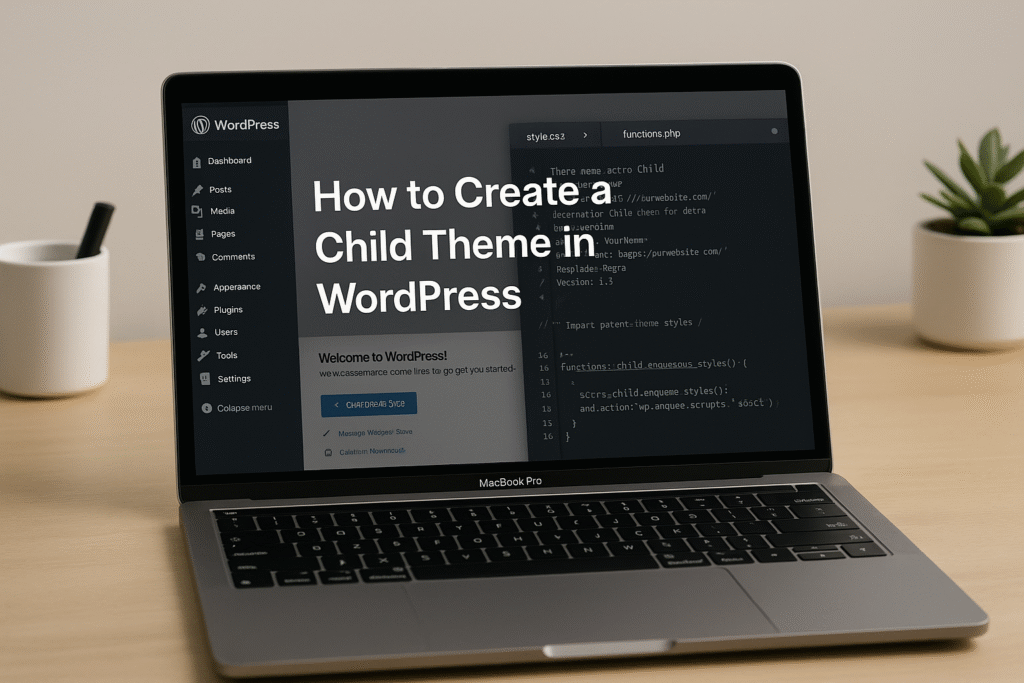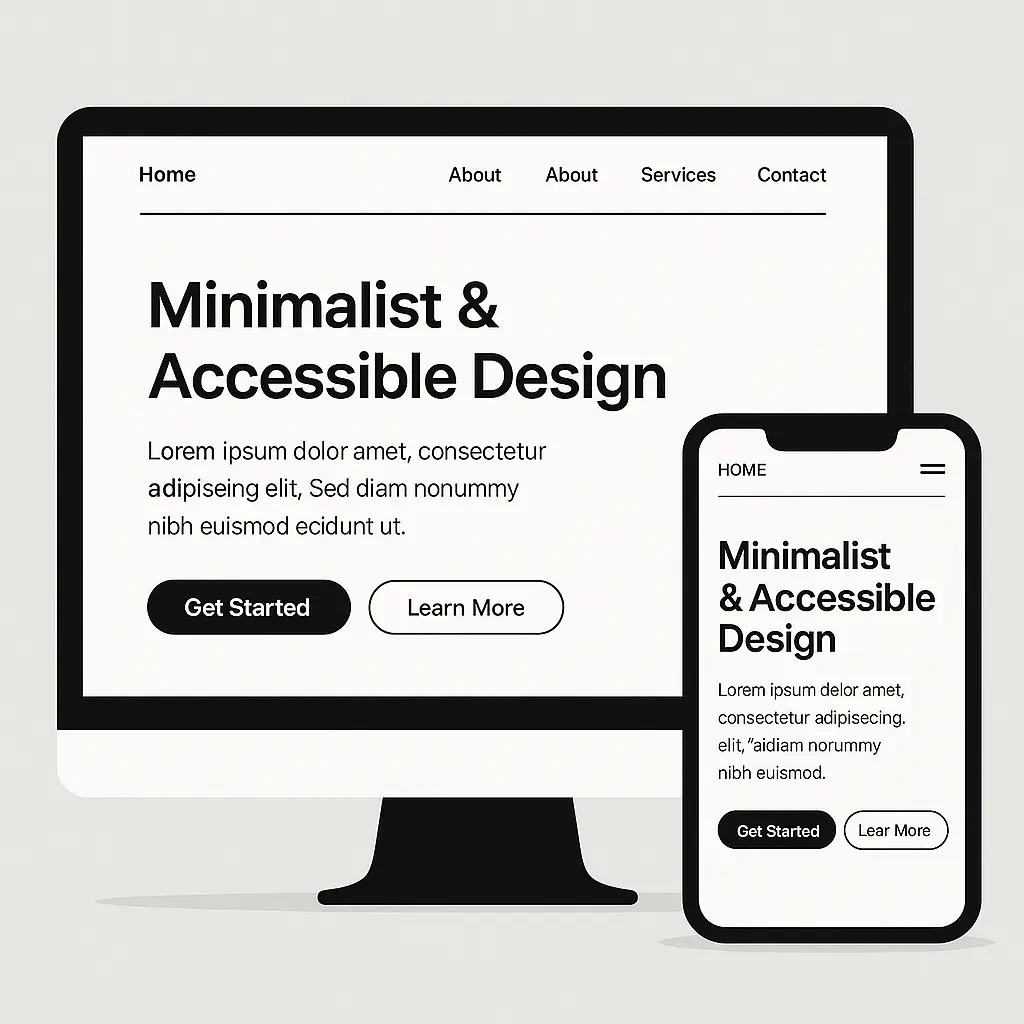
Table of Contents
Introduction
If you’ve been following WordPress over the past few years, you’ve probably noticed a big shift happening—and it’s all about block themes. WordPress isn’t just the most popular content management system anymore (it powers over 40% of all websites worldwide); it’s evolving into a platform that gives both beginners and pros the tools to build websites faster, smarter, and more creatively than ever.
So, what’s all the buzz about block-based design? Unlike traditional themes that lock you into fixed layouts, block themes let you build websites one piece at a time, like digital LEGO blocks. Want to move that hero section? Or swap out a gallery? No problem—just drag, drop, and customize. This modular approach doesn’t just make designing easier; it opens the door to endless creative possibilities without touching a single line of code.
The best part? Block themes aren’t just a trend—they’re changing the way WordPress websites perform, look, and feel. Faster design, better accessibility, and easier maintenance are just the beginning. For businesses, bloggers, and developers alike, this means creating professional, future-proof websites without the usual headaches.
So here’s the big question: Are block themes the future of WordPress development? In this post, we’ll break down everything you need to know—from the advantages of block themes to real-world use cases—and show why they’re becoming the go-to choice for anyone looking to build a modern WordPress site in 2025 and beyond.
What Are Block Themes?
If you’ve ever wrestled with a traditional WordPress theme, you know how tricky it can be to tweak layouts or make design changes without diving into code. That’s where block themes come in—they’re changing the game entirely. Built around the WordPress block editor (Gutenberg), these themes let you design your site piece by piece using blocks—think paragraphs, images, buttons, galleries, and more.
The magic of block themes is how flexible they are. Want to move your header? Swap a gallery? Add a call-to-action button? It’s as simple as drag and drop. No coding, no headaches—just visual, intuitive editing. It’s like having a digital LEGO set for your website.
For beginners, block themes make building a professional-looking website easy and fun. For developers, they provide a robust, modular framework to create highly customizable and scalable sites. By embracing block themes, WordPress is staying true to its mission of democratizing web design, giving everyone—from hobby bloggers to business owners—the power to create websites that look amazing and perform flawlessly.
Why Block Themes Are Gaining Traction
If you’ve been exploring WordPress recently, you’ve probably noticed block themes popping up everywhere—and for good reason. They’re not just a passing trend; they’re reshaping how websites are built and managed. So, what’s driving their growing popularity among developers, businesses, and content creators alike? Let’s break it down.
1. Unmatched Flexibility
One of the biggest draws of block themes is the level of creative control they offer. With a fully visual, block-based interface, you can tweak virtually every aspect of your site—from fonts and colors to layouts and spacing—without ever touching a line of code. It’s like having a digital sandbox where you can experiment freely and see your changes in real time.
2. Streamlined Workflow
Traditional themes often require juggling multiple tools—page builders, custom CSS, or even plugin-heavy workarounds—to achieve a polished design. Block themes simplify this process by bringing everything directly into the WordPress editor. You can build and customize your entire site in one place, saving time and reducing frustration.
3. Better Performance
Because block themes minimize dependence on bulky plugins and external tools, they can help your site load faster and run smoother. In today’s digital landscape, speed isn’t just a luxury—it’s critical for SEO, user experience, and keeping visitors engaged.
4. Future-Proof Compatibility
Block themes are built to work seamlessly with the WordPress block editor and upcoming updates. This means your website is more resilient to changes, plugin updates, and new features—making block themes a smart, long-term choice for anyone looking to stay ahead in WordPress development.
In short, block themes combine flexibility, simplicity, performance, and compatibility, giving users and developers alike a modern, efficient, and enjoyable way to build websites. It’s no wonder they’re gaining traction and shaping the future of WordPress design.
Challenges of Adopting Block Themes
Block themes are undoubtedly exciting and full of potential, but like any new technology, they come with a few challenges—especially for those transitioning from traditional WordPress themes.
1. Steeper Learning Curve for Developers
For developers used to working with classic themes, diving into block-based design can feel a bit like learning a new language. Concepts like theme.json files, block patterns, and template parts are essential to master but may take time to get comfortable with. Even experienced developers might find themselves adjusting workflows and rethinking how they structure websites.
2. Getting Used to the Block Editor
While the block editor (Gutenberg) is powerful, some users—especially those familiar with page builders like Elementor or Divi—may initially find it less intuitive. The drag-and-drop flexibility is different, and building complex layouts may require patience and experimentation until users get the hang of it.
3. Plugin Compatibility Concerns
Not all WordPress plugins are fully optimized for block themes yet. This can create functional limitations, particularly for websites with advanced features or specialized requirements. Some integrations may require additional tweaking or workarounds until plugin developers fully embrace block-based architecture.
4. Adjusting to a New Design Mindset
Block themes encourage a more modular, flexible approach to design, which is fantastic—but it can also challenge traditional thinking. Designers and developers need to shift from rigid template-based layouts to a more dynamic, block-oriented mindset, which may take time and practice.
The good news? WordPress is actively investing in block-based improvements, and the ecosystem is evolving quickly. As more themes, plugins, and resources become fully compatible, these challenges will gradually diminish, making block themes not just a trend, but a core part of the future of WordPress development.
The Role of Block Themes in WordPress Development
For developers, block themes aren’t just a new design trend—they’re a game-changer. By embracing a modular, block-based approach, developers can prototype and iterate faster than ever. Reusable block patterns and templates allow teams to build entire sections of a website once and use them across multiple pages or projects. This not only speeds up workflows but also ensures consistency and quality across every site a developer builds.
Freelancers and agencies, in particular, benefit from this modularity. Projects that once took days of coding and troubleshooting can now be completed more efficiently, freeing up time for creative experimentation and client collaboration. It’s like having a toolbox filled with pre-designed building blocks—ready to assemble, customize, and deploy.
Block themes also perfectly align with WordPress’s Full Site Editing (FSE) initiative. This groundbreaking feature allows users to take control of every part of their site—from headers and footers to sidebars—directly through the block editor. No more switching between custom code, page builders, or multiple plugins. FSE and block themes together signal a more cohesive, user-friendly, and flexible future for WordPress development.
In short, block themes are redefining what it means to design and build websites in WordPress, giving developers the tools to create faster, smarter, and more adaptable sites than ever before.
Are Block Themes the Future?
When you look at the evolution of WordPress, it’s clear that block themes are poised to play a major role in its future. Their seamless integration with the block editor, focus on faster performance, and ability to empower users with creative control make them a natural fit for modern web design. As more developers and designers adopt block-based workflows, we’re likely to see a surge of innovative themes that push the limits of what WordPress can do—combining stunning visuals with flexible functionality.
That said, traditional themes aren’t going away overnight. Many businesses, agencies, and developers still rely on classic themes for their familiarity, stability, and compatibility with existing tools and workflows. In reality, the WordPress ecosystem is moving toward a hybrid landscape, where block themes and traditional themes coexist, giving users the freedom to choose the approach that best suits their needs.
Ultimately, block themes represent more than just a design trend—they’re part of WordPress’s long-term vision for a more flexible, user-friendly, and future-proof platform. Whether you’re a beginner building your first site or a seasoned developer creating complex projects, block themes offer the tools and versatility to create websites that are ready for the demands of 2025 and beyond.
Key Takeaways
- Block themes are the future of WordPress: They embrace the block editor (Gutenberg) and enable fully modular, flexible website design.
- Enhanced flexibility and control: Users can customize every part of their site—headers, footers, layouts, and content blocks—without coding.
- Streamlined workflows for developers: Reusable block patterns and templates speed up development and improve consistency across projects.
- Better performance and future-proofing: Reduced reliance on heavy plugins leads to faster, more efficient websites.
- Learning curve and compatibility: Adopting block themes may require understanding new concepts and checking plugin compatibility.
- Coexistence with classic themes: Traditional themes won’t disappear immediately; a hybrid ecosystem is expected.
- Empowering users of all skill levels: Block themes make professional-looking websites accessible to beginners while offering advanced capabilities for developers.
Frequently Asked Questions
People Also Ask: Future of WordPress Themes and Block Themes
Explore common questions about block themes, the future of WordPress, block-based design, and WordPress development. These FAQs provide insights into how block themes are transforming WordPress themes.
These FAQs highlight how block themes are reshaping WordPress. For more insights on the future of WordPress and block-based design, check the full post.
Conclusion
Block themes are more than just a passing trend—they’re a peek into the future of WordPress. With their emphasis on flexibility, modular design, and seamless integration with the block editor, they’re transforming the way websites are built, customized, and managed. For both beginners and seasoned developers, block themes offer a simpler, more efficient, and creative approach to website design.
Of course, adopting block themes comes with a few challenges. There’s a learning curve, plugin compatibility to consider, and a shift in how we think about layout and design. But the momentum behind block-based design is undeniable, and the WordPress community is steadily building the tools, resources, and knowledge to make this transition smoother than ever.
Whether you’re a freelancer looking to speed up your workflow, a business owner aiming to create a professional site without heavy coding, or a developer exploring new possibilities, now is the perfect time to dive into block themes. They empower you to experiment, innovate, and build websites that are not just visually appealing, but also fast, future-proof, and user-friendly.
In short, block themes are here to stay—and embracing them now means being at the forefront of WordPress’s exciting, block-based future.
🚀 Launch Your Online Dreams with Hostinger!
The content of this post is for general information only; we make no guarantees about its accuracy or completeness, and you use it at your own risk. We also use Google AdSense and affiliate links, meaning we may earn a small commission from purchases or clicks at no extra cost to you. This supports our site, and we only recommend products we believe in.
✨ Connect with Us ✨
Stay updated with our latest WordPress guides, SEO tips, and AI tools. Follow us on social media or reach out via email!
📢 Sharing is Caring. Please Share this.
You May Also Like:
Explore more powerful insights to level up your WordPress and SEO game:
💡 Keep exploring insightful tips and strategies at WordPressGuruPro.com


